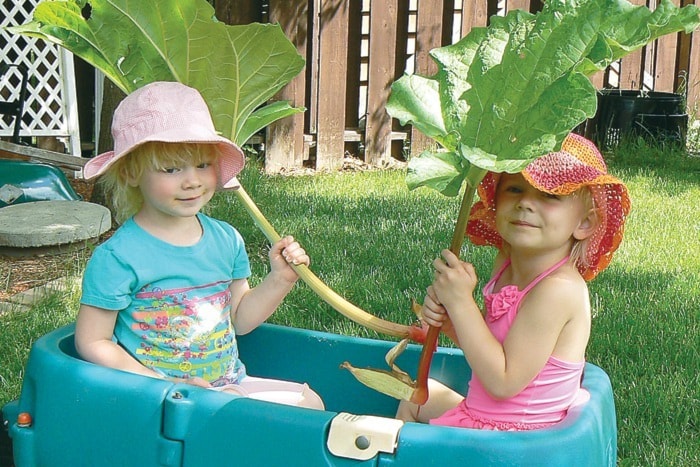Folks (like me) who are Prairie-born and bred, can’t wait to pull springtime’s first fresh rhubarb stalks. Strawberry-coloured and early growing, this humble and common plant, combined with fresh berries, cooks up into compotes and concoctions fit for nobility.
Rhubarb boasts a fascinating history and some legitimate wild relatives. A member of the buckwheat clan, rhubarb is related to wild docks and sorrels. Technically, it’s a vegetable that is used as a fruit. The toxic leaves contain oxalic acid and cannot be eaten or composted.
The word derives from the Latin reubarbarum, “root of barbarians.” Originating in Tibet over 2,000 years ago, this native Asian plant was indeed consumed by barbarians. In the 18th century rhubarb made its way to Europe, and early settlers soon brought it to North America, calling it “pie plant” because all they could make with it was pie.
Fibre-rich and loaded with potassium, vitamins A and C, magnesium,and calcium, this inexpensive, early food sustained pioneers through many chilly Canadian springs. Thrifty cooks and home gardeners still favour the perennial rhubarb for muffins, scones, crisps, jams, chutneys, desserts and my personal favourite … lemonade.
Always pull rhubarb stalks, rather than cutting, in order to assure a second and third crop and a long-lived plant. Store sliced rhubarb in the fridge in a plastic bag, or simply freeze raw.
In Alaska and the Yukon, the indigenous Alaskan Rhubarb (Polygonum alaskanum), is used as a rhubarb substitute.
However, not everything rhubarb is sweet and good.
One wild substitute is Japanese knotweed (Polygonum cuspidatum), an escaped non-native plant originally introduced from Asia as a garden ornamental.
Aggressive in nature, it now infests coastal marshes, waterfront areas, rivers and streams.
The bamboo-like plant has now become naturalized and a cross-Canada checkup indicates it’s in the rogues’ gallery of invasive species in many provinces.
Stick with the garden variety, and your rhubarb plant should last a lifetime.
Contact Christine by e-mail: wildernesswest@shaw.ca.
